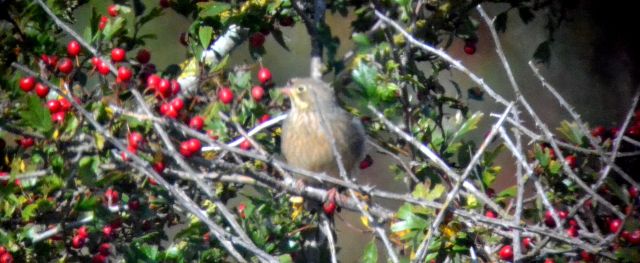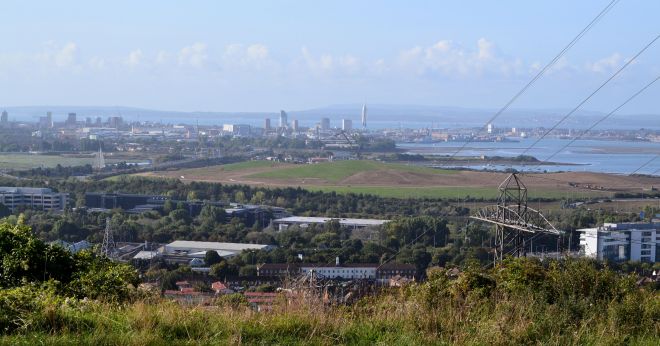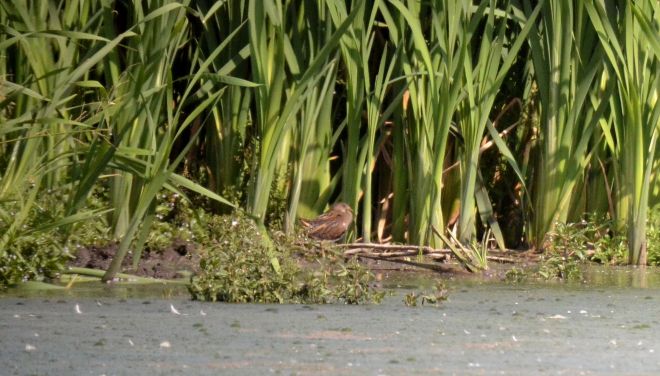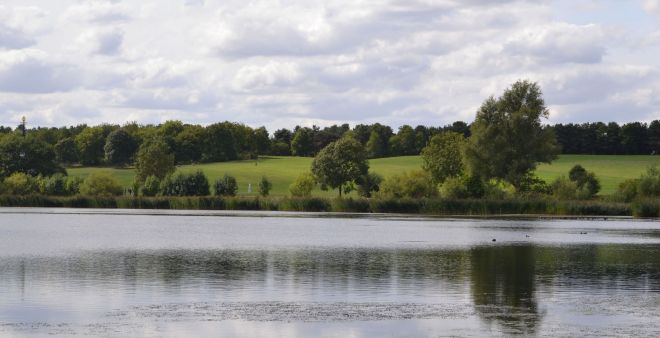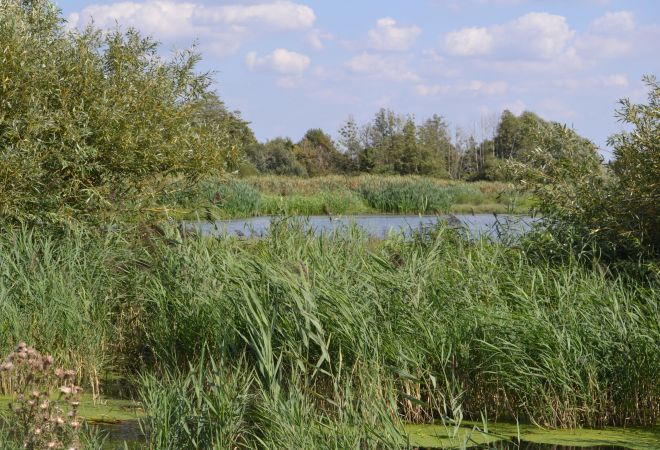Since I was spending part of last week in Suffolk that presented an opportunity to go after my second British Pallid Harrier at a site on the journey to and from there. So at 8:30 yesterday morning I arrived at a car park by a sports centre (TL 34769 40459) just outside the town of Royston and set off south for half a mile or so along the Icknield Way trail. I knew exactly where to go having drawn blank here earlier in the week on my way over to Bury St Edmunds, where I was decorating a friend’s house.
On that day (25th) I had walked from another car park near the junction of the A505 and the old road into Royston. There I met a photographer from St Albans who had some kind of GPS app on his phone and a reference for the location where the bird had last been reported. That involved walking uphill and skirting a golf course and was at least twice as far. But this place, Therfield Heath was quite scenic for the Herts / Cambridgshire border and it was a lovely, cool and sunny autumn day.
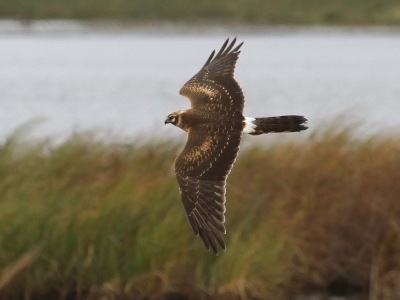
Pallid Harrier (outsourced) © RSPB
The Harrier, a juvenile female had arrived in the area a week earlier on 18th to be reported daily in various locations between the heath and the upmarket village of the same name about two miles to the south. Green-clad optics carriers and their cars were not welcome at that end of the trail, hence my decision to walk from Royston. We met two birders coming back the other way who said our quest had been showing well in a field just over the brow of the hill. When we got there it had been viewed about 30 minutes previously.
This spot (TL 34817 39440) was a very dry and stunted corn field, a testimony perhaps to the hot summer just gone, where some of the better pictures on RBA (see here) must have been taken. The five other birders we joined there said the Harrier came into the field close by Greys Farm as part of its circuit, and was last seen flying south across the arable land that sloped away to Therfield village. The landscape here rather reminded me of the South Oxon Downs.
I stayed for almost two hours from about 12:15 to just after 2pm before going on my way, but the bird did not reappear. It was reported again about an hour after I left. At the second attempt I was much better prepared and somewhat more fortunate. This time I was the only birder there and shortly after arriving decided to scan over the fields to the south from a gap in the hedge further along the Icknield Way. From there I picked out a large brown bird flying north, before going out of view behind the treeline away to the west.
This looked promising so I headed back to the corn field. Soon the Pallid Harrier flew from around the trees in the picture below, then low across rough vegetation just north of where I was standing. The diagnostic three primaries and boa were none too clear to see in the glary light, but just before vanishing over a hedge to keep on heading north-east she banked to reveal underwing plumage. I took that as sufficient to clinch the ID, but in any case this raptor was behaving in a very un-Buzzard or Kite and decidedly Harrier-like manner.
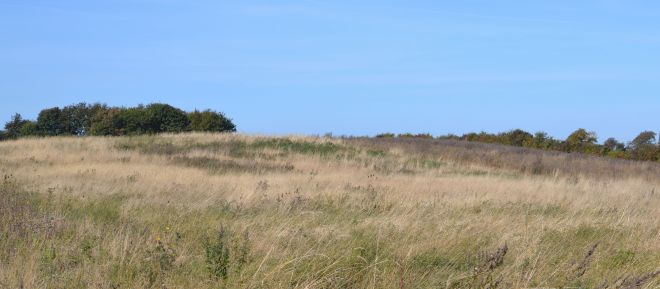
Yes I know, there’s something missing in this one!
It was 9:10 am. Dashing across the trail to view the next field I once again saw a large brown shape disappearing over the skyline. So what does one do? Try to chase the bird around, that in this case would involve a lot of foot slogging, or wait and see if she came around again. Not surprisingly I chose the latter option since any sighting further afield would be distant and this corn field might provide the best back drop against which to attempt pictures should the Harrier return. Once more I stayed on site for two hours and once again she did not show.
In all that time I didn’t meet one other birder, but county listers would probably all have seen this Harrier by now, and with no reports having gone out on Friday (28th) people were perhaps less likely to come from further afield. But I had now observed my second Pallid Harrier in Great Britain and third all told.
In recent years Pallid Harrier has become a more regular autumn vagrant in this country as some juveniles disperse from Scandinavia, though their core European breeding grounds are in Russia and the Ukraine. They winter in sub-Saharan Africa, India and south-eastern Asia. A medium-sized raptor of open country, it is found on steppes and grasslands but also in semi-deserts, marshes and agricultural areas. My previous one was on the north Norfolk coast in November (see here) and December (here) 2015, when it took three attempts to get decent views of that bird.
The Therfield individual was one of four Pallid Harriers in East Anglia over the last two weeks, the others being another long staying juvenile female at Welney WWT, Norfolk; and two at Ouse Washes RSPB on 17 & 18th. English records have also come from Cheshire, Lancashire and Devon during September. Apologies for the absence of pictures but this one moved too quickly, I wasn’t ready and she didn’t come back. Perhaps those things all add up to being a lady’s prerogative. Should the opportunity arise I may go again to try for images, but this bird appears to be becoming more and more elusive.



